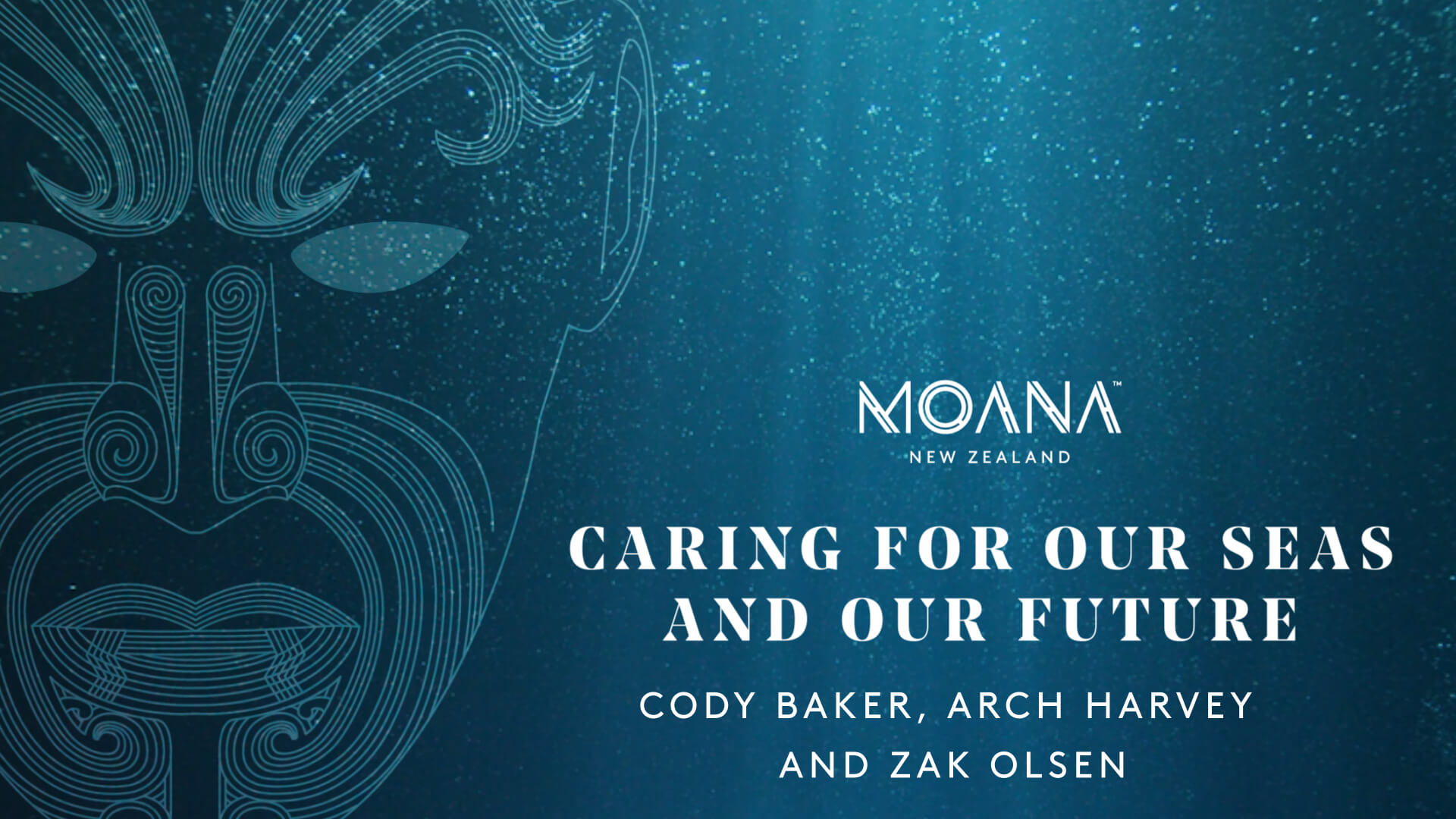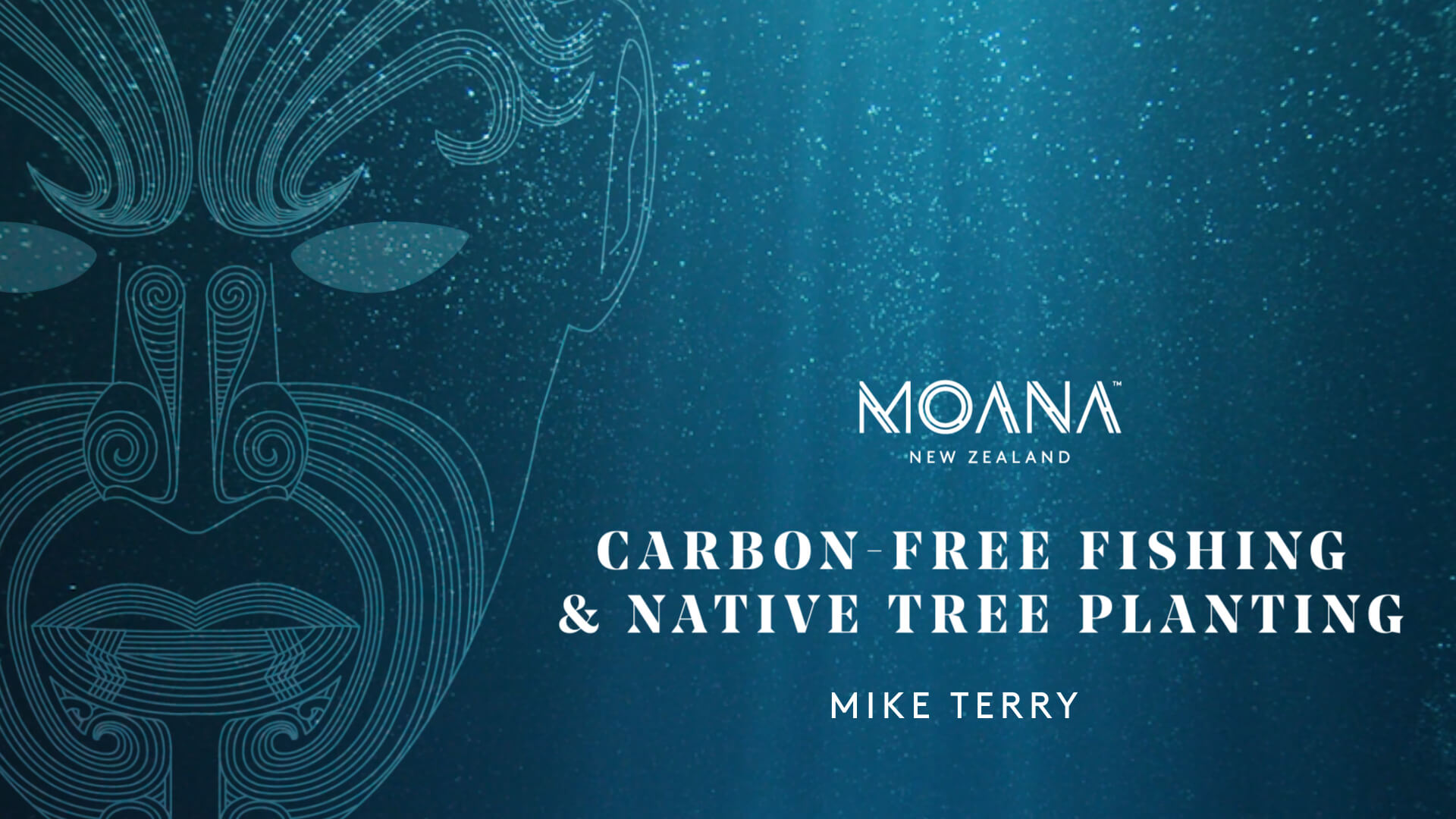Wise and enduring use of a taonga asset
A word from Rachel Taulelei,
Chair of Moana New Zealand
“Māori are really long-term thinkers. We are intergenerational by nature, so when we think about any aspect of our business, whether it's economic, about our people, or te taiao, we do it with a very long horizon in mind.
As Chair of Moana, responsible fishing to me is about that wise and enduring use of a taonga asset that we have, it’s our fisheries. It’s something that’s near and dear to us as Māori but equally it’s something that we use to sustain our livelihoods and so for that fact it’s a great responsibility and also an honour to chair a company that enables us to undertake the business of fishing.”
— Rachel Taulelei, Chair of Moana New Zealand
Rachel Taulelei:
Māori are really long-term thinkers.
We are intergenerational by nature, so when we think about any aspect of our business, whether it’s economic, about our people, or te taiao, we do it with a very long horizon in mind.
As Chair of Moana, responsible fishing to me is about that wise and enduring use of a taonga asset that we have, it’s our fisheries. It’s something that’s near and dear to us as Māori, but equally, it’s something that we use to sustain our livelihoods, and so for that fact, it’s a great responsibility and also an honour to chair a company that enables us to undertake the business of fishing.
You’ve got to think about what is the endgame that we’re shooting for and how can I make the right decisions now using a Te Ao Māori standpoint or perspective to make those sound decisions for, you know, your grandchildren’s grandchildren and beyond.
Jamie Tuuta:
You know, we’re in the business of fishing because it is part of who we are, our identity. Of course, the relationship goes back to the settlement, but importantly, we are doing this to provide positive benefits and impacts for not only iwi, and Māori, and our owners but, ultimately, for the broader community.
Lightening our Harvest Footprint
Guided by values, driven by responsibility
In our 2021 annual report we provided an introduction to this ambitious project that seeks to lighten the way we harvest inshore finfish. the harvest footprint project
This year we published a summary report on our contract fishers' efforts to minimise seabed impact through innovations and gear improvements, all at their own cost. The report was produced independently through Terra Moana and International Fishing Technologist Dr Steve Eayrs’. The report was based on a survey of contract fishers and serves as a baseline for future research of fishing methods. We’re proud of the work to date which has seen our contract fishers lighten their impact through the use of technology and gear innovations. read the report

Dr Steve Eayrs
International Fisheries Expert
Voluntary Innovative Fishing Gear
Dr Steve Eayrs talks about his findings on Moana contract fishers' innovative techniques and why they're important.

Moana New Zealand contract fishers’ stories
Moana’s contract fishers are passionate about what they do, with some businesses having been in the whānau for generations. They possess knowledge and experience that is invaluable to our company and so we celebrate their innovative fishing methods and care for their workplace—the bountiful ocean—in this series, which is featured throughout the report.
Cody Baker:
I just want to fish for the rest of my life, and when my working life finishes, if my kids want to, I’d like my kids to fish as well. We want fishing to continue to improve for the rest of our lives and the rest of our kids’ lives, too. It’s important to us, the fishery, we need it, without it, we don’t have a job.
Arch Harvey:
Nobody cares more about the fish than we do. We want them to be there for the next generation and the generation after that. I mean, if you talk to all the fishermen that are left in this fishing [industry], you won’t find anybody more passionate than us guys about looking after it. And it’s changed for the good, too, and the guys that are left in it now are very passionate about keeping it going for generations.
Zak Olsen:
If you want to see how we do it, you know, come out with us. You know, most of us would be more than willing to take you; you can see what we do, and you can share the same love that we share.

Kevin Saunders:
When I first started fishing for Moana, they had a policy of putting cameras on all their trawl vessels.
Roger Rawlinson:
For us, it hasn’t been really a big deal in our business because we’ve had cameras for years. We can hand on heart say that we’re doing the right things out there, and the camera footage will show that. We’re just out there, doing our job as best as we can, looking after the environment and yeah.
Our contract fishers have always been innovators and early to welcome and adopt new technologies. Watch Roger Rawlinson and Keven Saunders, two trawl skippers reflecting on cameras on their vessels.
Play Video
Responsible Fishers Workshops
Moana remains committed to supporting our contract fishers, providing the platform and opportunity to connect and share ideas through our annual Responsible Fishers Workshops.
This year was no different, and we set out to meet our contract fishers in the regions with a programme containing a review of key programmes from Moana, guest speakers from government agencies and Australia, and fishers’ experiences on the water.
The feedback from our fishers is always positive and they appreciate the opportunities for company and industry updates, but also to connect with each other.
Carbon Emissions
Moana and Sealord have committed to measuring carbon emissions generated through our operations and both organisations are using 2019 as a baseline year, to better understand our effect on the environment.
A carbon footprint typically consists of three different scopes; Scope 1 and Scope 2 are in the firm’s direct control, while Scope 3 is considered to be outside of a business’s control. For Moana, Scope 1 emissions include refrigerants, company vehicles and stationary fuel, while Scope 2 emissions include electricity. The majority of Moana’s emissions are generated under Scope 3 with contract fishing vessels (36%) and freight (33%) being the major contributors.
Sealord’s emission calculation differs in that they own their fishing vessels and therefore, associated emissions are calculated under Scope 1 as it is within their direct control. Another difference is that Sealord also include emissions from their Australia-based venture Petuna Aquaculture.
Hover your arrow over the graphics to reveal the scope and percentage within each image.


Note: Moana New Zealand has been audited by Toitū Envirocare, and is currently undergoing verification for 2023. Sealord is currently undergoing a similar process.
Automating carbon emission calculations
It has been a busy year developing an in-house carbon emission dashboard that where possible, automatically captures our emissions in real time based on supplier data. With this tool, we’re able to understand our emissions by species and across different operating sites.
It will help our people to understand what emissions we are generating and how changes we make affect our carbon emissions, as well as tracking reductions and efficiencies. We’ve also built in an intensity measurement, which tells us the amount of carbon emissions we are generating per kilogram of product – a helpful measurement given the increase in inshore ACE from the Sanford agreement.
Decarbonisation
This year we engaged with Beca, an environmental consulting firm, to complete a decarbonisation roadmap to 2040. It has included growth aspirations i.e., emissions resulting from the Sanford inshore ACE agreement, initiatives for absolute emission reduction for things within our direct control such as transitioning from air to sea freight where applicable, and global assumptions such as a percentage of freight switching to more sustainable aviation fuels.
While we could make some sizable savings through these initiatives, we still have a long road to travel to get to carbon net zero by 2040 and we know that offsetting will be needed. We’ve started exploring options and look forward to sharing these with you in the near future.
Our contract fishers are also forward-thinkers and are actively looking for ways to reduce their emissions. Mike Terry is one of these fishers who has planted just about every specie of native tree on his land that he could get his hands on. He’s also recently invested in a new Scania engine built to the latest emission standards with increased fuel efficiency.
Mike Terry:
I would say I’m just an ordinary Kiwi bloke. Love what I do on the ocean, love what I do on the land.
A lot of people think, give me a bit of a hard time, “Oh, you’re going green with all those trees”, and that.
My vision is, with my fishing and that whatever you do on the land, it’s got to be pretty special and well looked after because if you have any problems on the land - accidents, spillages and stuff, everything ends up in the ocean.
I try to tell people that, “watch what you put on your land”, because when it rains, it all ends up in the rivers, and then the rivers end up in one of our major bread baskets.
I’ve always loved native trees and birds, so I just started planting a few for a hobby around the house, started planting a few more, and then it became a few more.
I’ve lost count now, but I think I’m over three and a half thousand. I’ve got every species of native you could just about think of, and then I thought one night, I thought, “Oh, once we get this new engine in and everything, we could be carbon-free operators”.
This is our new dream, Scania. Less emissions out of this engine, burns a lot less fuel. We’re hoping it’s going to burn somewhere between 10 and 12 litres an hour less.
I mean, the biggest polluters in the world don’t seem to worry about it, but someone’s gotta start somewhere. Maybe a fisherman who fishes for Moana can show the way to some people that this is what you need to do.
Yeah, I’m just an ordinary Kiwi bloke, hardworking, just love what you do.
Sealord and Te Arawa partnership transitions unproductive land to native forest
In September, Sealord announced a $10 million commitment over the next ten years in a carbon offset programme that will see underutilised Te Arawa whenua around the wider Rotorua region developed into permanent forest.
The programme, developed by Te Arawa Fisheries and New Zealand Carbon Farming (NZCF), will help offset some of the carbon resulting from Sealord’s operations, maximise the potential of marginal land, create jobs and improve whānau outcomes, and help improve the local environment, including water quality in and around the Te Arawa Lakes.
Called Ara Rākau, Te Arawa Fisheries CEO Chris Karamea Insley says the initiative is a solid example of the opportunities the carbon economy offers Māori, while highlighting the role Aotearoa New Zealand’s leading companies can take in supporting the country’s climate commitments.
Sealord CEO Doug Paulin says the programme supports Sealord’s sustainability focus, helping the company to achieve its carbon reduction goals.
“Sealord is committed to sustainability and playing our role in helping to address climate change impacts on future generations. We’ve already reduced our total emissions by 23.7% since we started measuring our carbon footprint in 2019, through investment in new vessels, fuel optimisation, focussed maintenance and reducing fossil fuel use in our land-based operations.”
reduction in Sealord’s emissions
since 2019
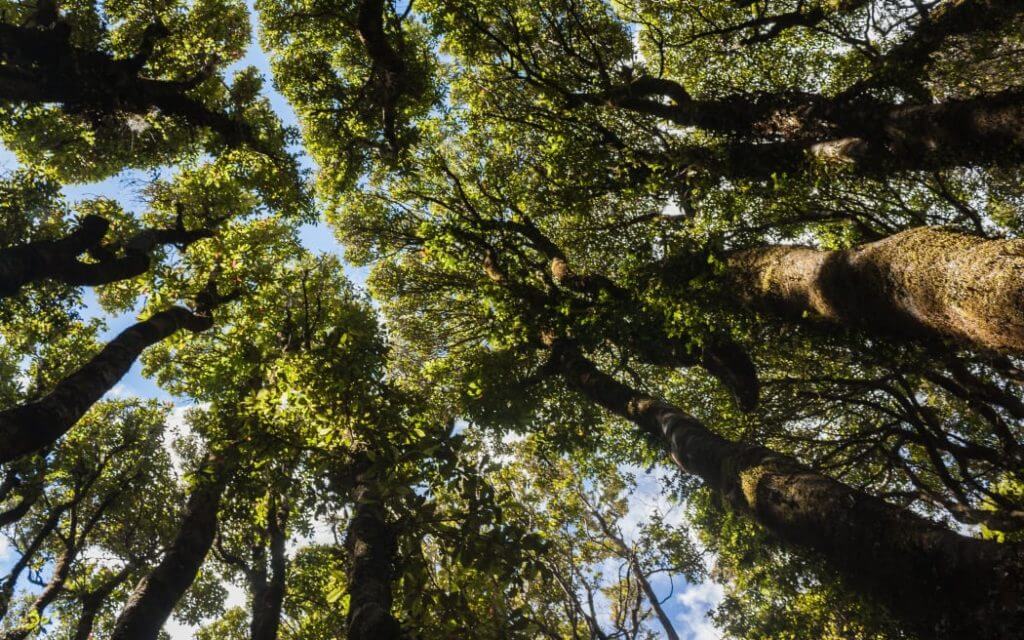
He Koha celebrates its first year
We launched He Koha in July 2022 – a sustainability programme that is based on the whakataukī:
Aroha mai, aroha atu
— love received is love returned.
Quarterly prize winners
For every sustainability idea given, we give our kaimahi a koha in return that will help them on their journey and break down barriers to living a more sustainable life. Throughout the year, the sustainability working group have voted for and awarded the He Koha submissions that have the most impact. We would like to recognise our four quarterly prize winners, who each demonstrate a creative lens to how we could better integrate sustainability into our practices and operations.
Nicola Frampton
Idea to divert end of life branded clothing and PPE away from landfill, and instead send to UPPAREL who are on a mission to eradicate textile waste and extend the life cycle of textiles through the reuse, repurpose and recycle model. Perfectly aligned with our commitment to the 6Rs.
Cian Henwood
Our Pārengarenga tio site is located right on the beautiful water’s edge. With remoteness comes challenges such as no running fresh water. We were providing our people with 24 packs of water bottles for staff to drink, however we will move to a 15Lt water bottle on a dispenser saving our use of plastics. Every bit counts!
Annie Pham
Suggested that we make planting trees as part of Matariki celebration for every Moana site. Annie thought that planting trees together, or donating trees to a marae or local school would continue to connect staff with their local communities.
Emmanuel Malpot
The Nelson tio hatchery offers potential to grow other shellfish species such as scallops or toheroa that might have the potential to be used for wild stock enhancement projects. Those two species are endangered yet iconic kaimoana for most New Zealanders. Manu has suggested looking into utilising the hatchery in the off season for tio to grow scallops and toheroa.

Inaugural Annual He Koha Winner Rene Crouch
We celebrated one year of He Koha with a grand prize of an e-scooter, that was awarded to Rene Crouch from our Coromandel tio farm. Rene had the idea to switch the water supply for manufacturing and washdown process over from a fresh water supply to a saltwater supply. This koha aligns with our focus area to protect and preserve fresh water as a precious resource.
Engagement within the He Koha programme has seen a significant uptake, a 169% percent increase in submissions from Q1 to Q4. There have been some excellent, well thought out ideas come through Tacklebox that have made a meaningful change to site practices and staff behaviour.
6Rs - The well-being of future generations
What makes Moana special is our shared values—it’s reflected time and again in the way our people work collaboratively to be better tomorrow than we are today. Here’s a few initiatives from our kaimahi.
Reuse
Coromandel have been collecting pairs of gloves that would normally be disposed of from the shore shed and cleaning them for reuse. While the factory always washed their gloves, all teams are now being encouraged to wash and reuse where possible.
The team in Palmerston North have created a ‘gifting table’, where staff can bring in used items that they no longer need. If no home is found for the item, it is taken to the local op-shop. The idea has been so successful that now left over food ingredients, which are still safe to consume, are being placed on the table to be taken home. If they are not collected in 48 hours, they are then home composted.

The local community in Whangaroa have been reusing the old wooden rails that were removed during our tio transformation project to build a shed. The whole building has used the reused wood, with the exception of the beam above the door.
Recycle

A number of sites have been progressing their recycling journey. Special mentions go to the teams in Wiri, Wellington, and Nelson, who have all expanded their onsite recycling programmes such as accepting different recyclables like soft plastics or e-waste.
The Palmerston North team kicked into action after watching a “Seven Sharp” clip where Volunteering Hawkes Bay Cyclone Gabrielle relief organisers asked the public for gumboots for help with their clean-up efforts.
A total of 63 pairs of gumboots were donated—they were considered unsafe for the wet factory floors and destined for recycling, but still effective in keeping people’s feet dry and safe from potentially harmful debris.
The Wellington Kaimoana Hub has been using sustainability evaluation criteria when considering construction contractors for the site. One of the recycling initiatives proposed and implemented was for old concrete to be transformed to aggregate, which will be filled around drains and pipes once they are laid.
Refuse
The Palmerston North team have been thinking creatively about what tools are needed in their processes. The team have considered whether nitrile gloves are appropriate for their mahi and have refused using them for a less plastic heavy glove.

The team have also refused using single use hair nets and, after some due diligence with food safety regulators, they swapped them out for fabric, which can be laundered with uniforms at the end of each day.
Their recipe development team have refused using measuring cups that end up in landfill, instead replacing them with PET cups that can be recycled.
Rethink
The Nelson Tio team have been rethinking the global warming potential of the fuel used in our hydraulic hoses and are investigating the potential of biodegradable oil.
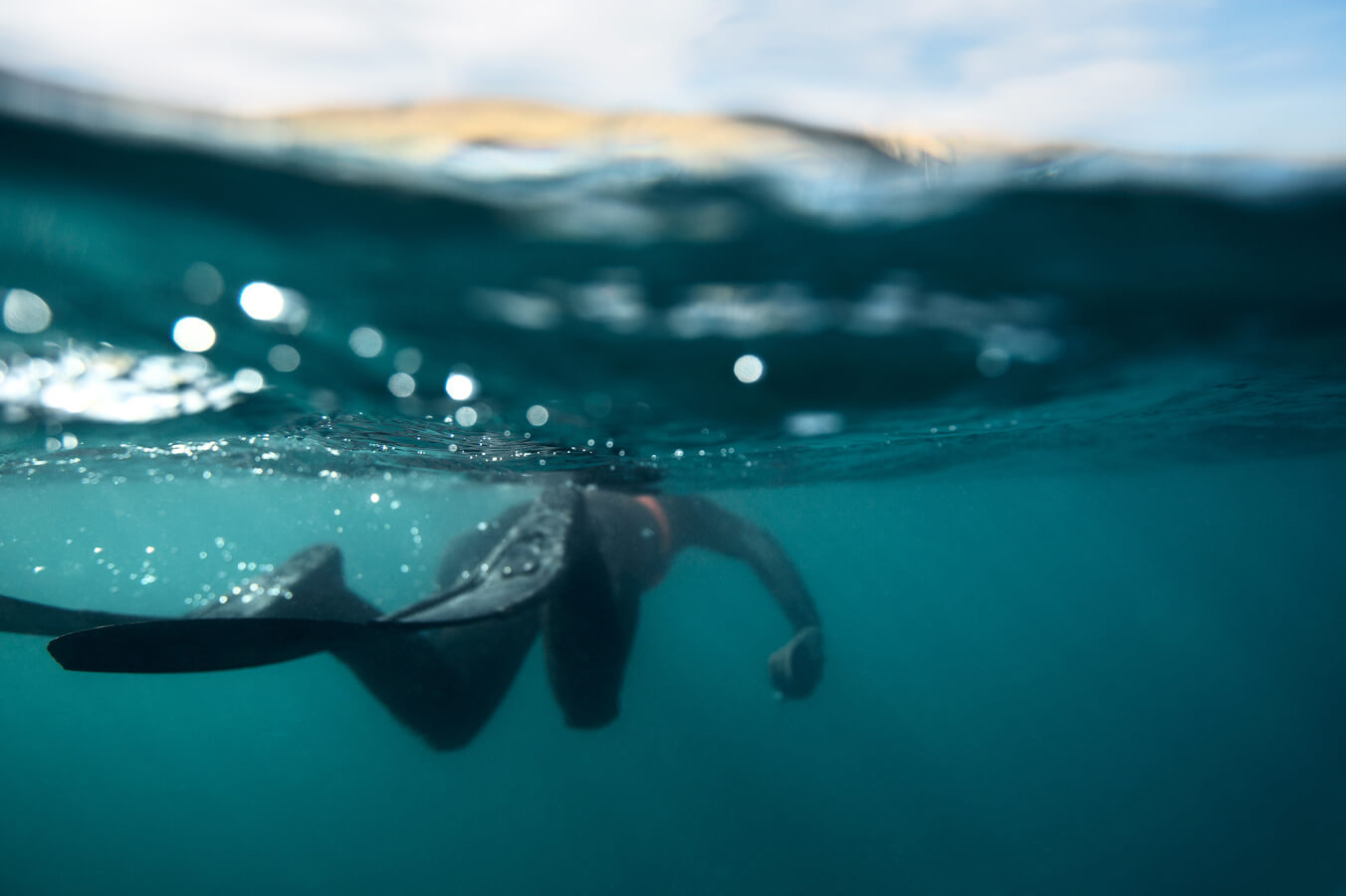
We’re rethinking the way we communicate sustainability facts, some kaimahi have added a fact at the end of email signatures. For example: “30% of the Hauraki Gulf Marine Park that extends 12 nautical miles out from the Great Barrier Island is closed to trawling.”
Repair
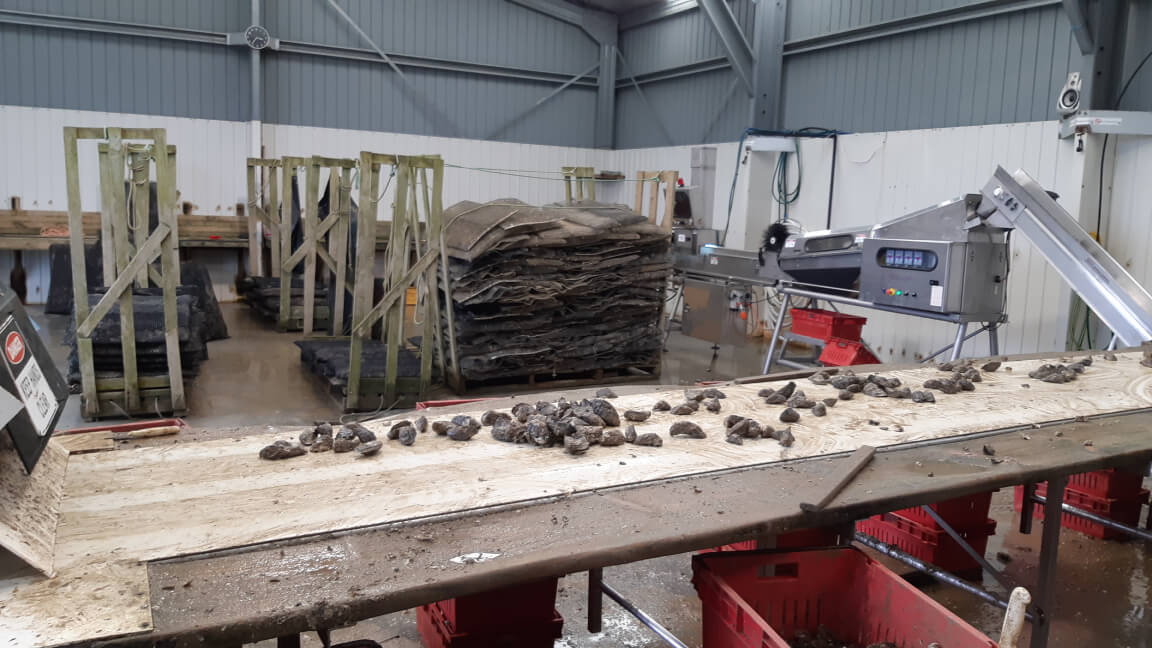
A grader was needed in Pārengarenga to increase efficiencies and reduce manual handling. Instead of purchasing a new grader that would have been sourced from overseas and transported to the far north, they decided to recondition an older model from Whangaroa, which works just as well.
A number of Moana sites have reported and repaired leaking pipes, which is an excellent way to preserve fresh water. Wiri has even implemented a quality control check to report any water leaks, so they can be repaired immediately.
Reduce
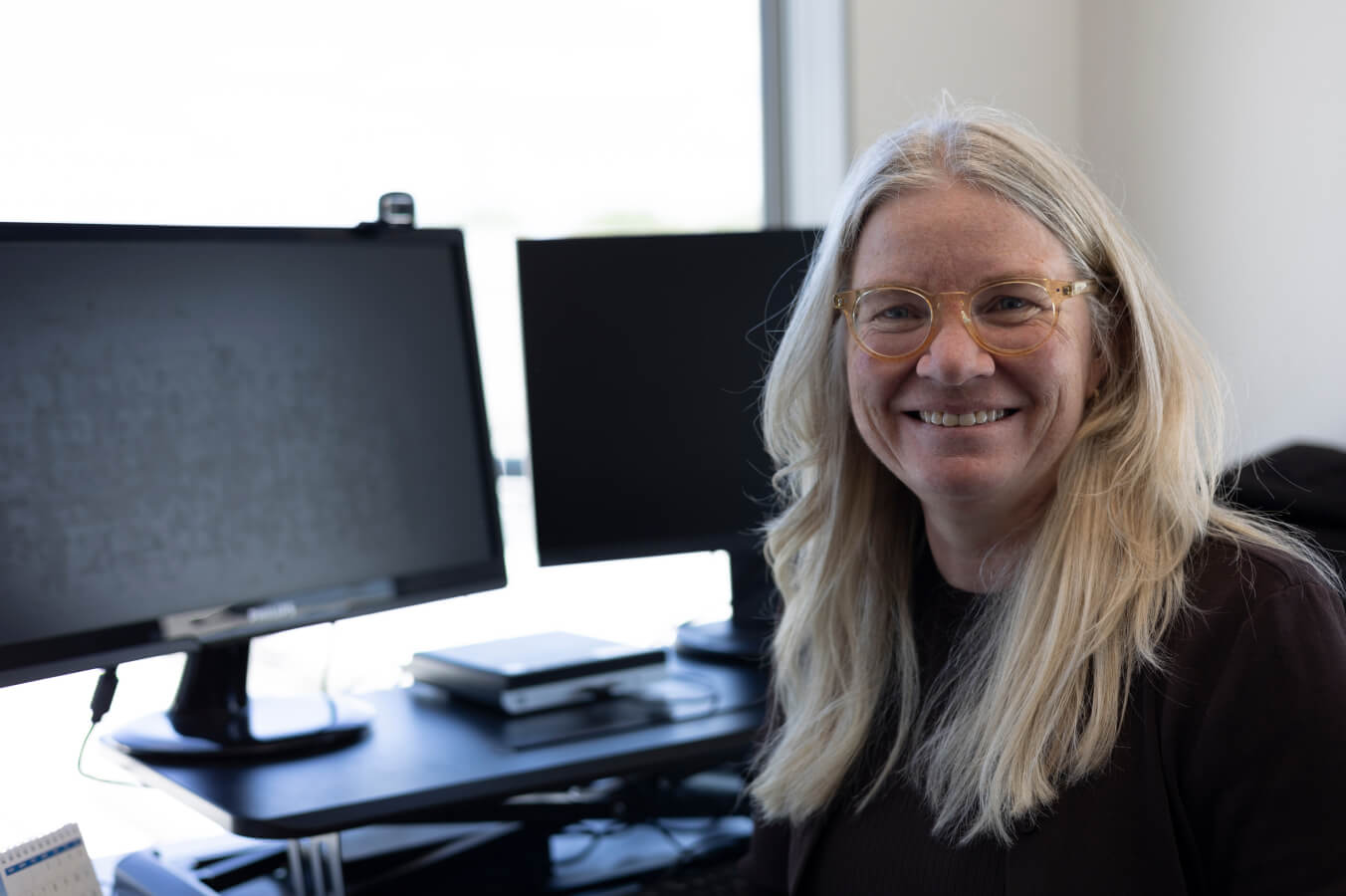
The head office in Mount Wellington has been investigating how we can reduce our power usage and has found that by reducing the brightness of computer monitors from 100% to 70%, it can save up to 20% of the energy each monitor uses.
Palmerston North has struck up a deal with the local road marking company to provide services free of charge in exchange for the facility’s empty waste buckets. This will be a permanent arrangement.
Some Tio sites have transitioned from using single-use cling wrap to reusing old oyster bags to protect the flip farm baskets when they are being transported.


